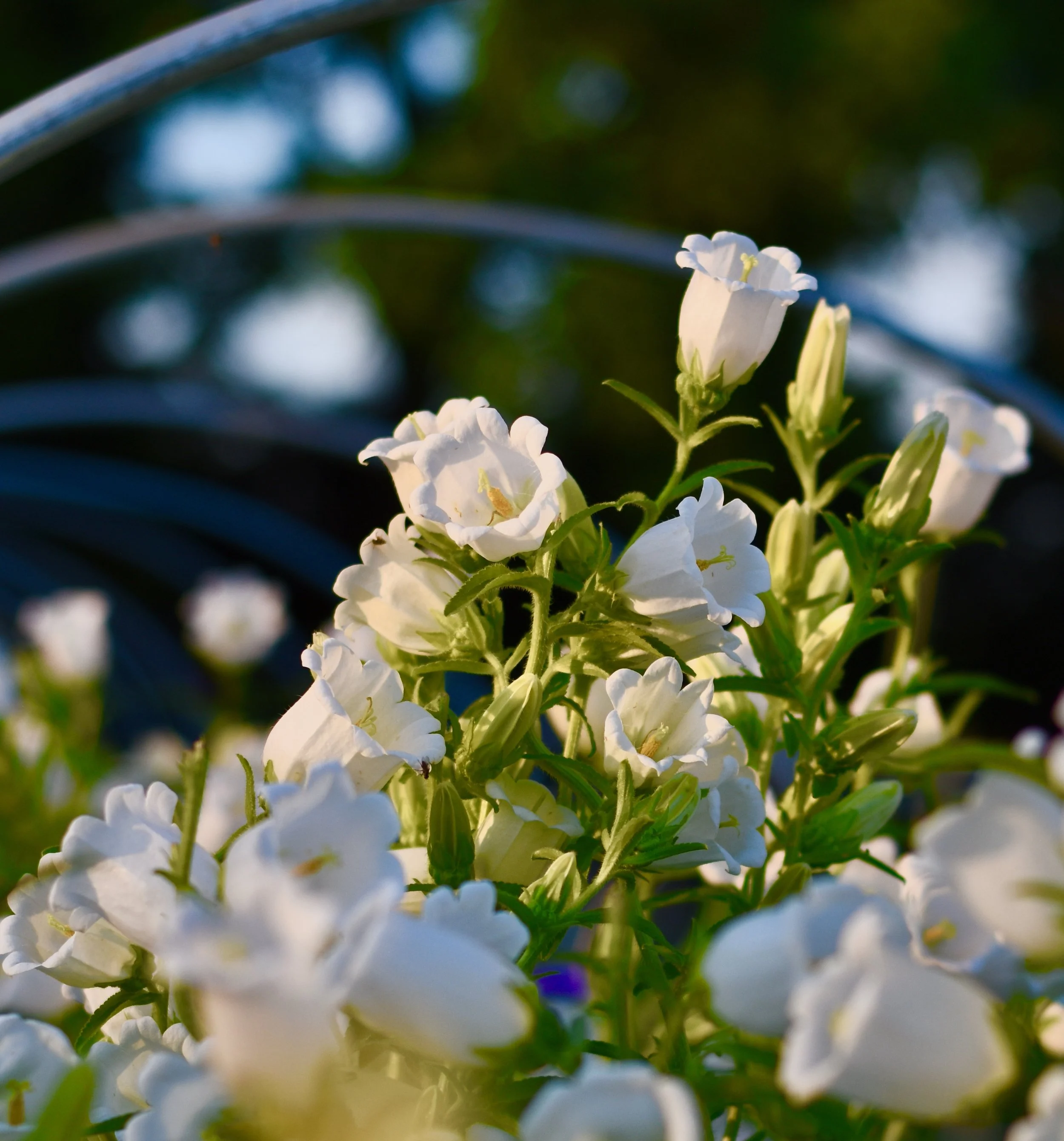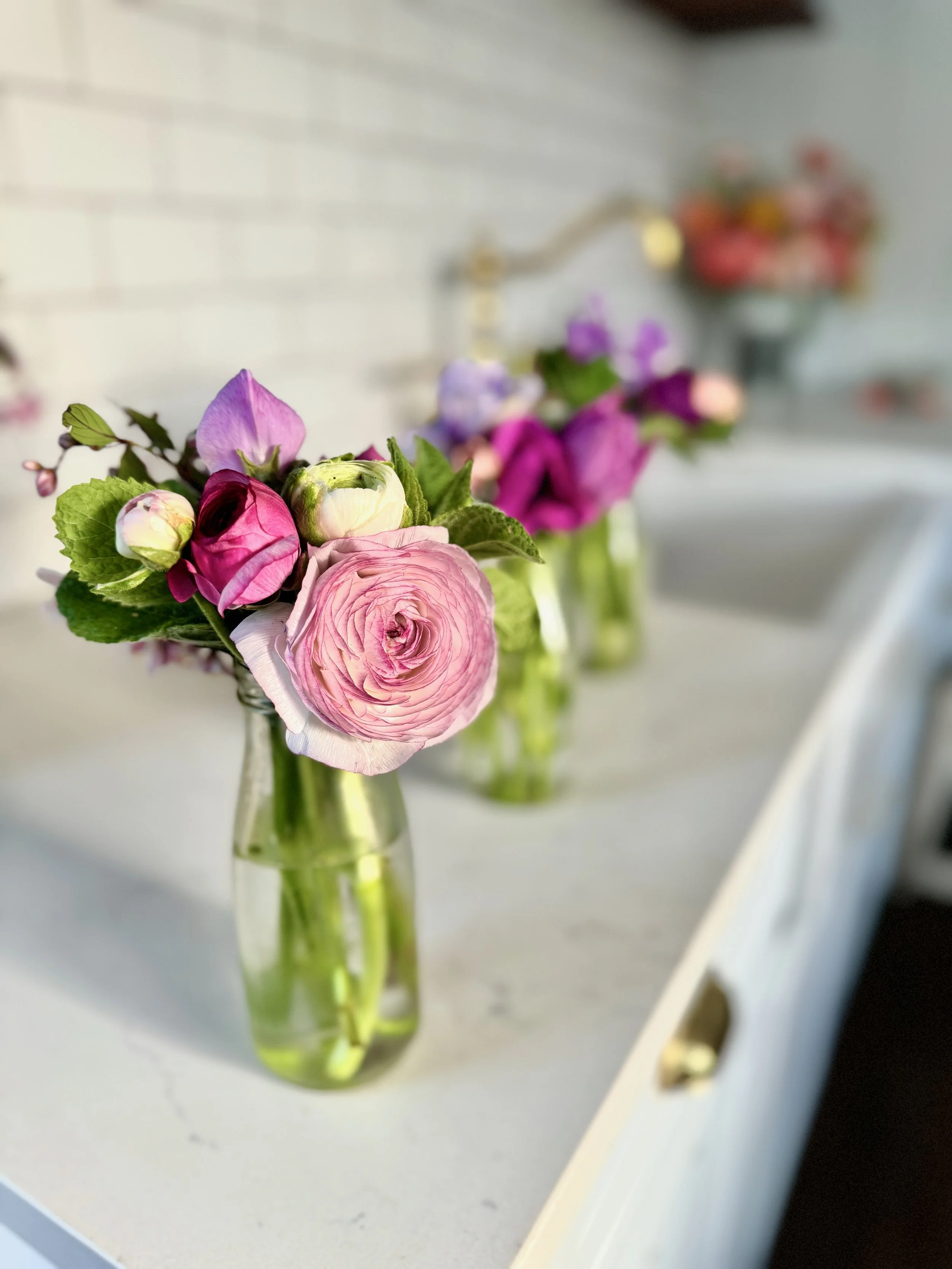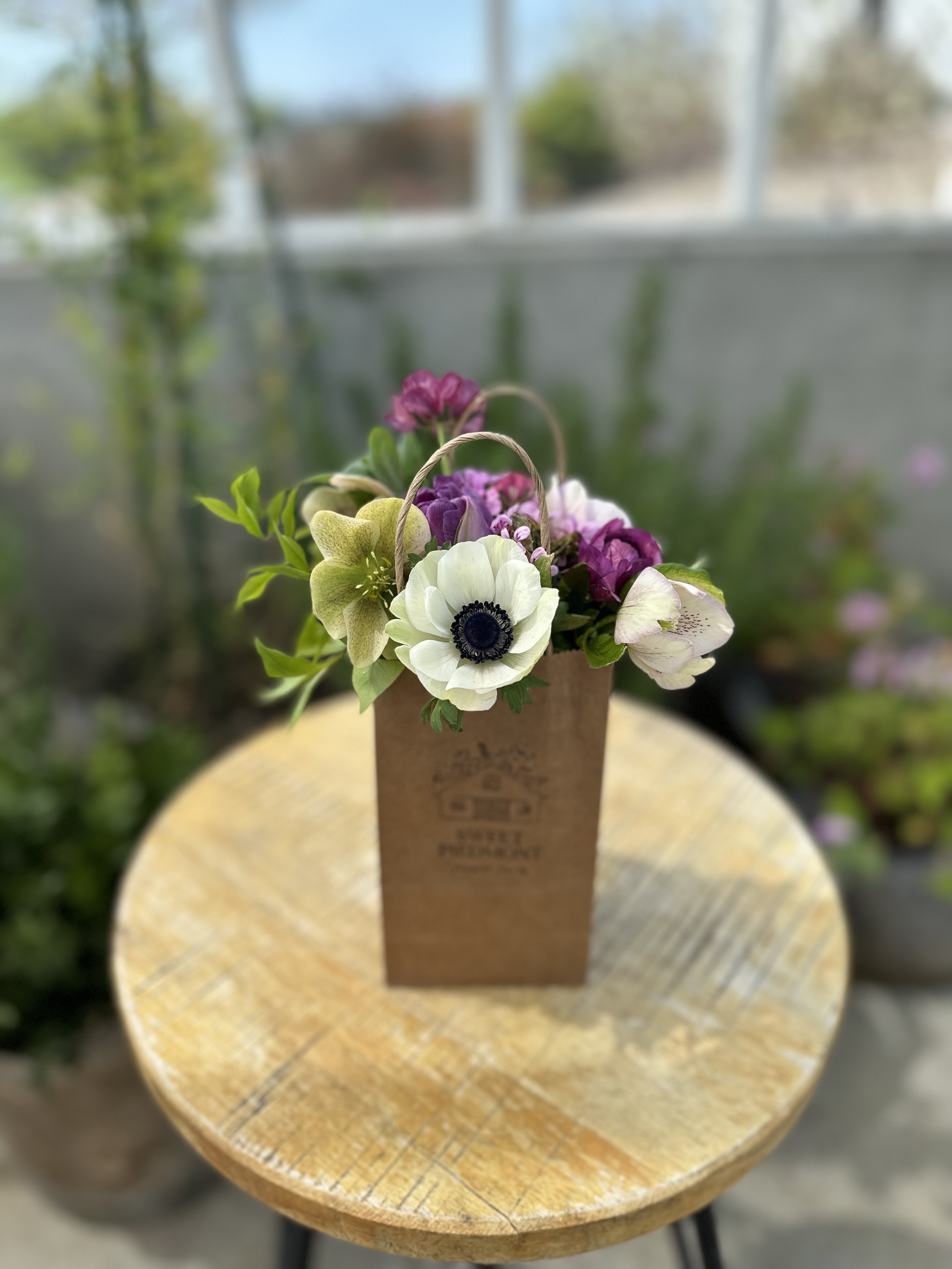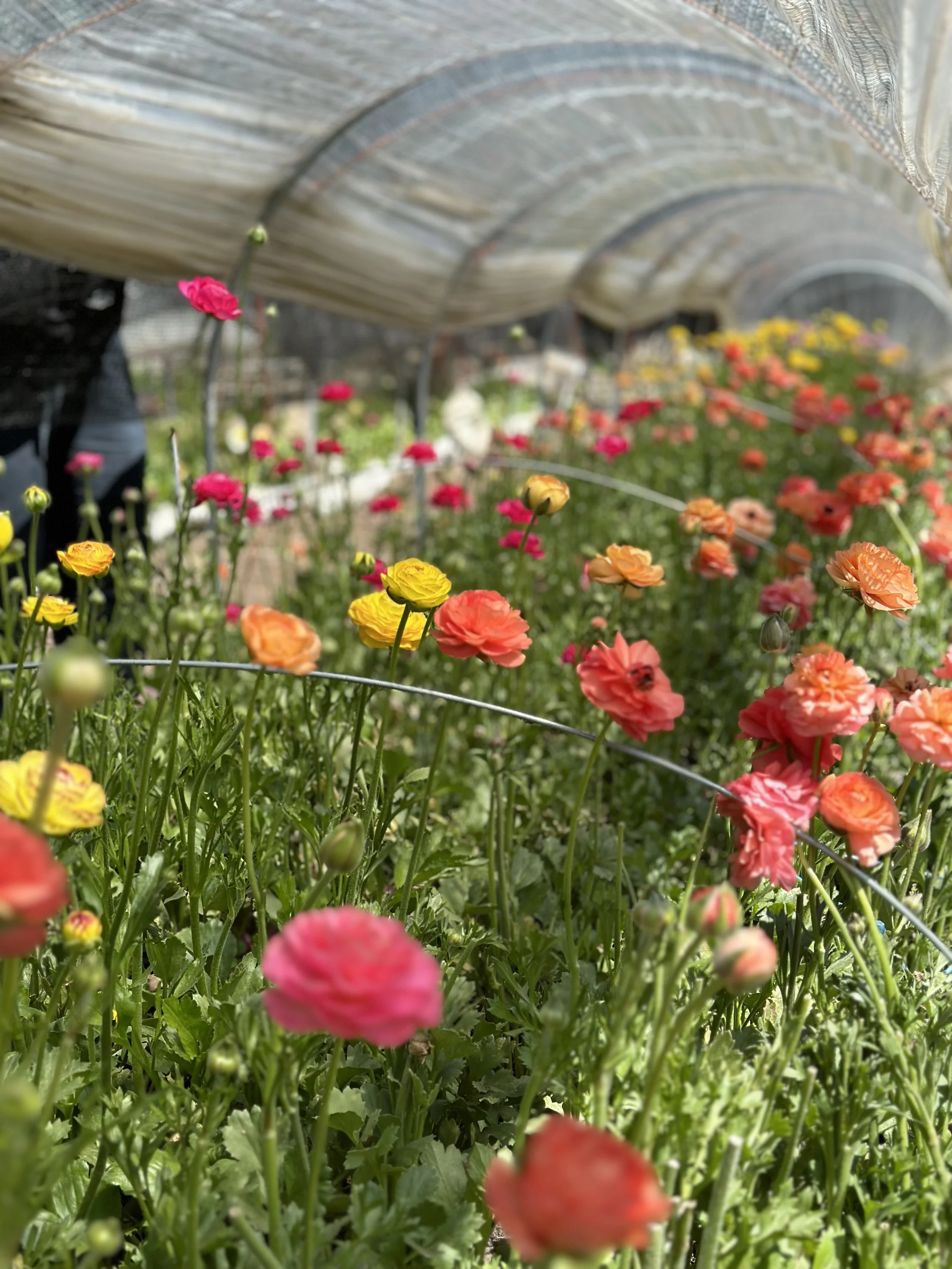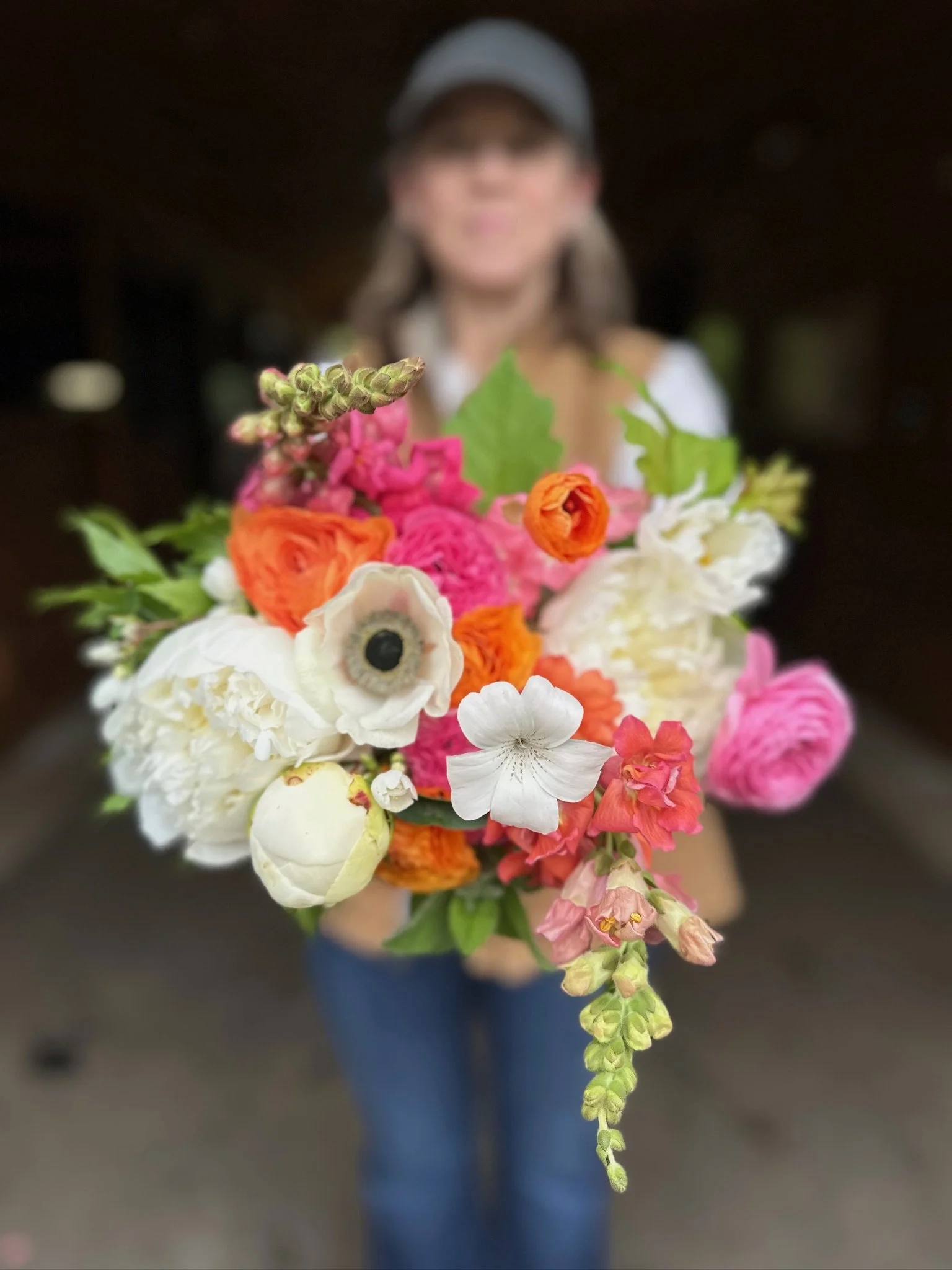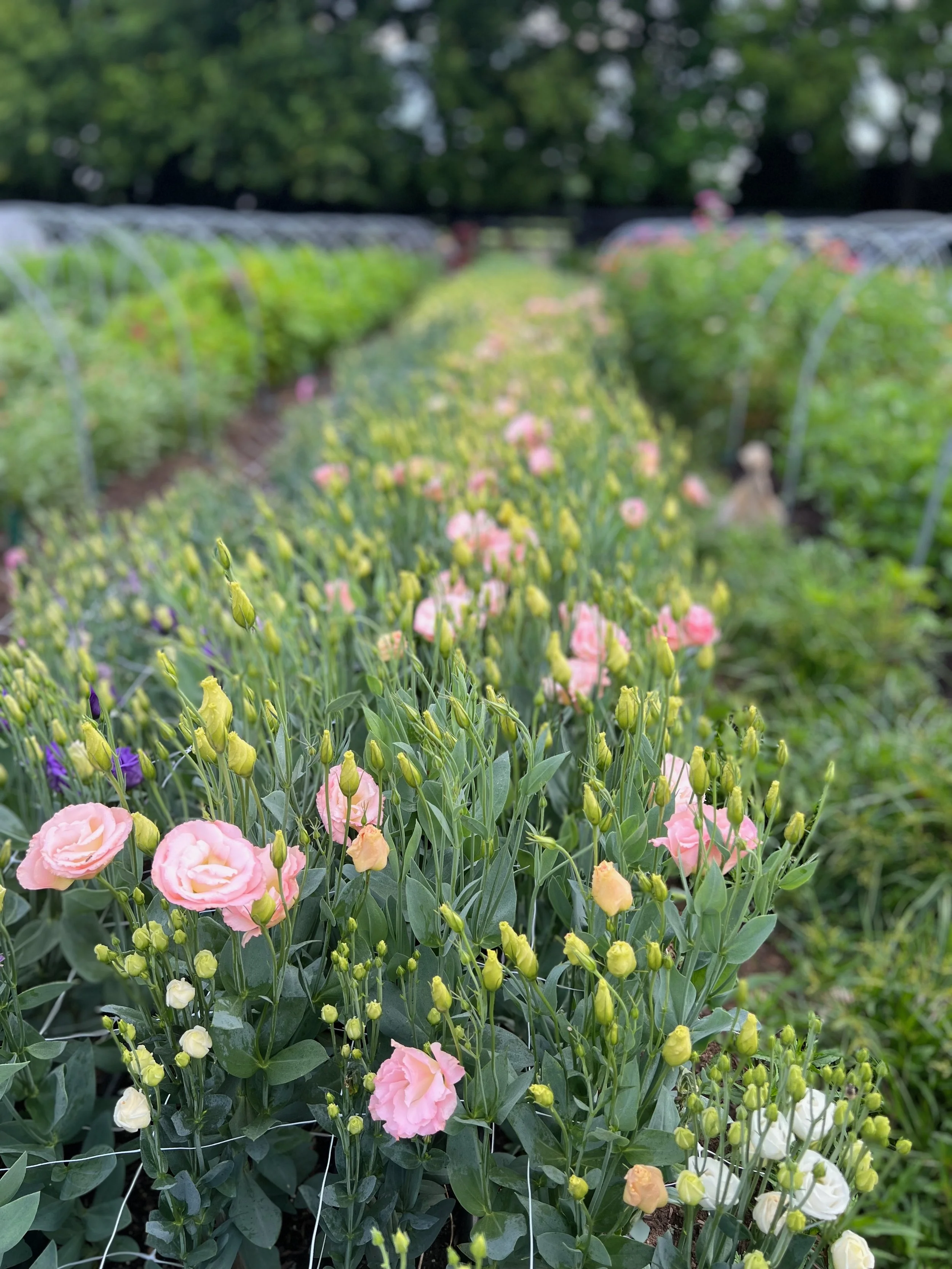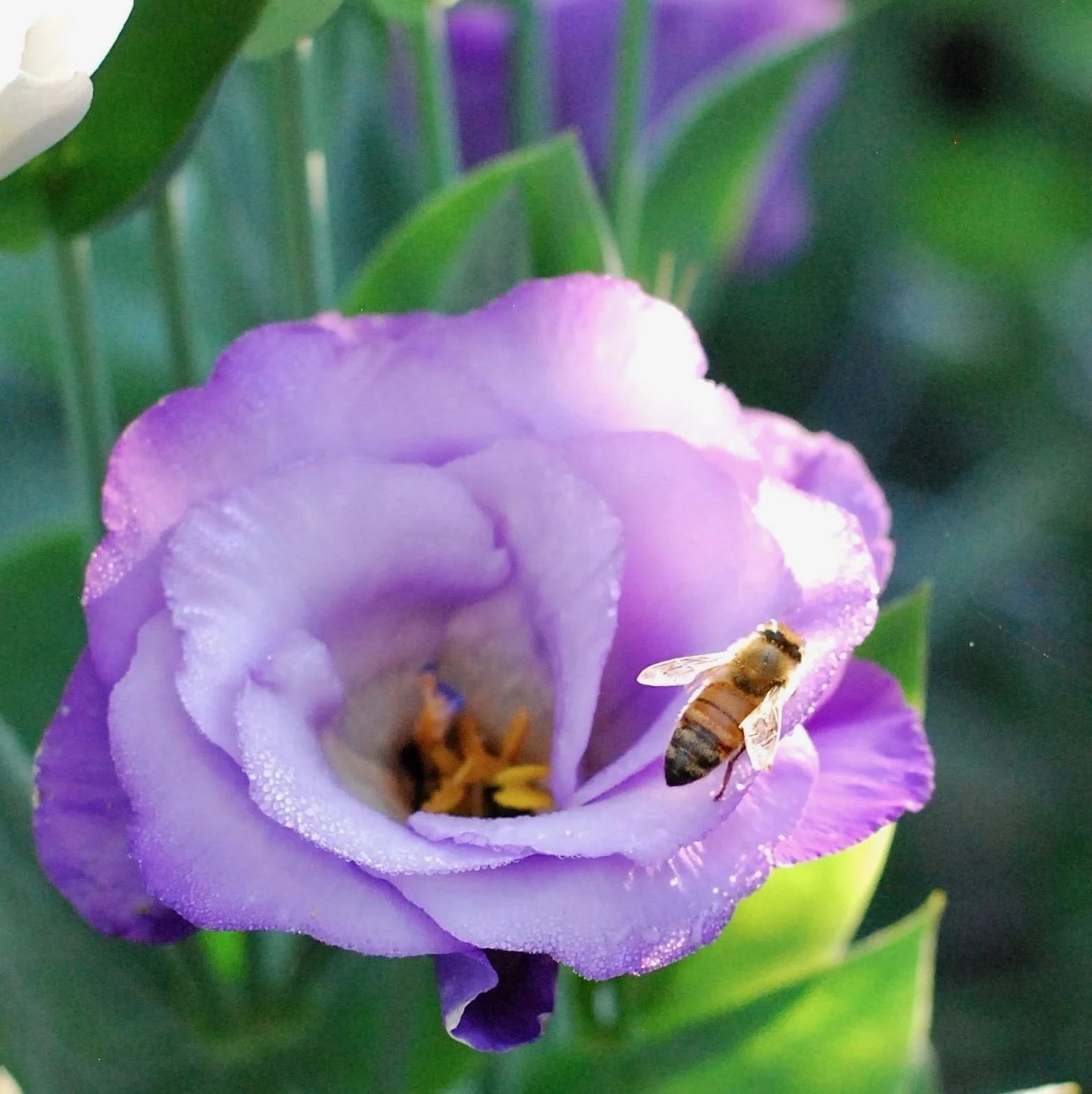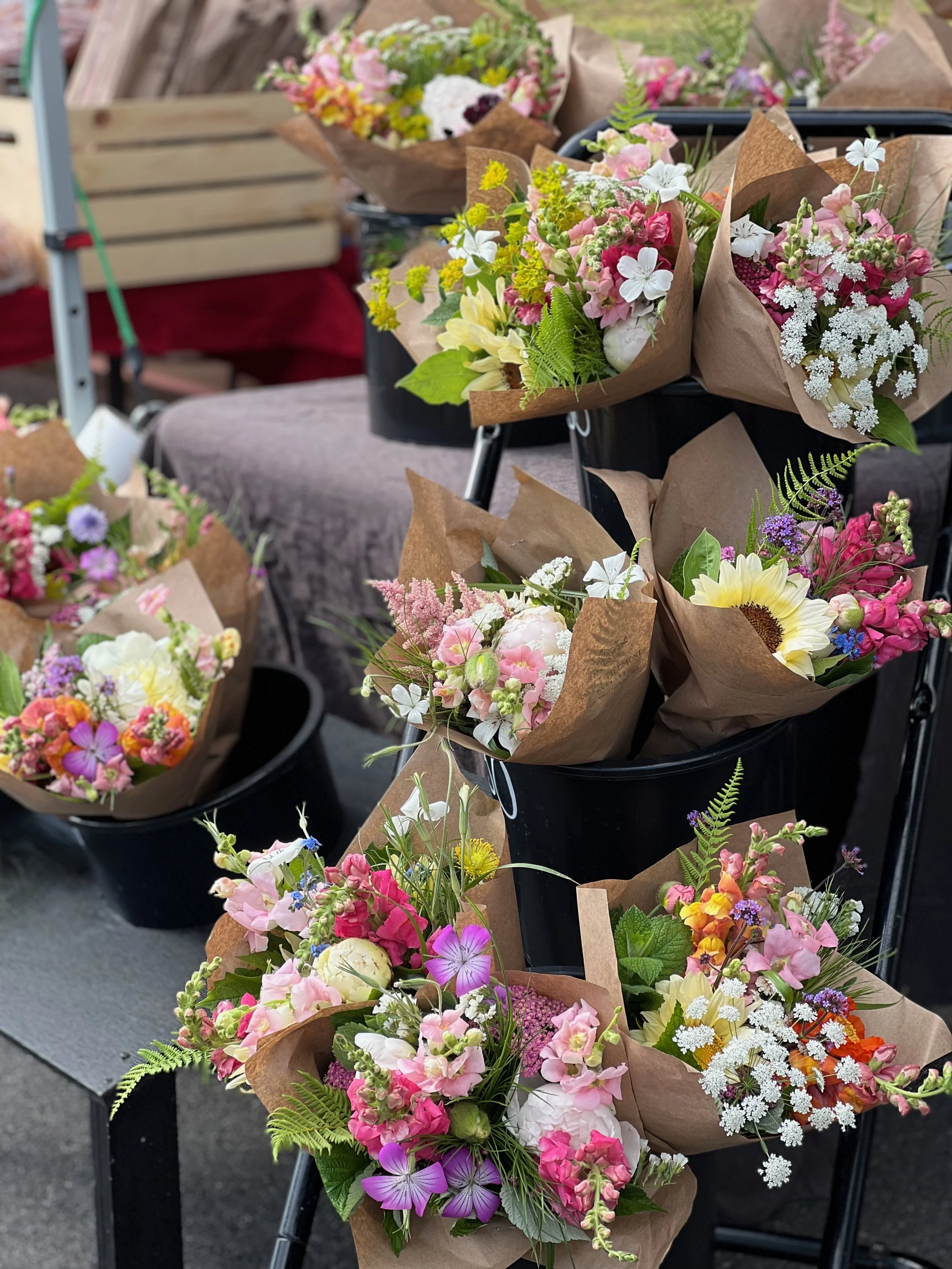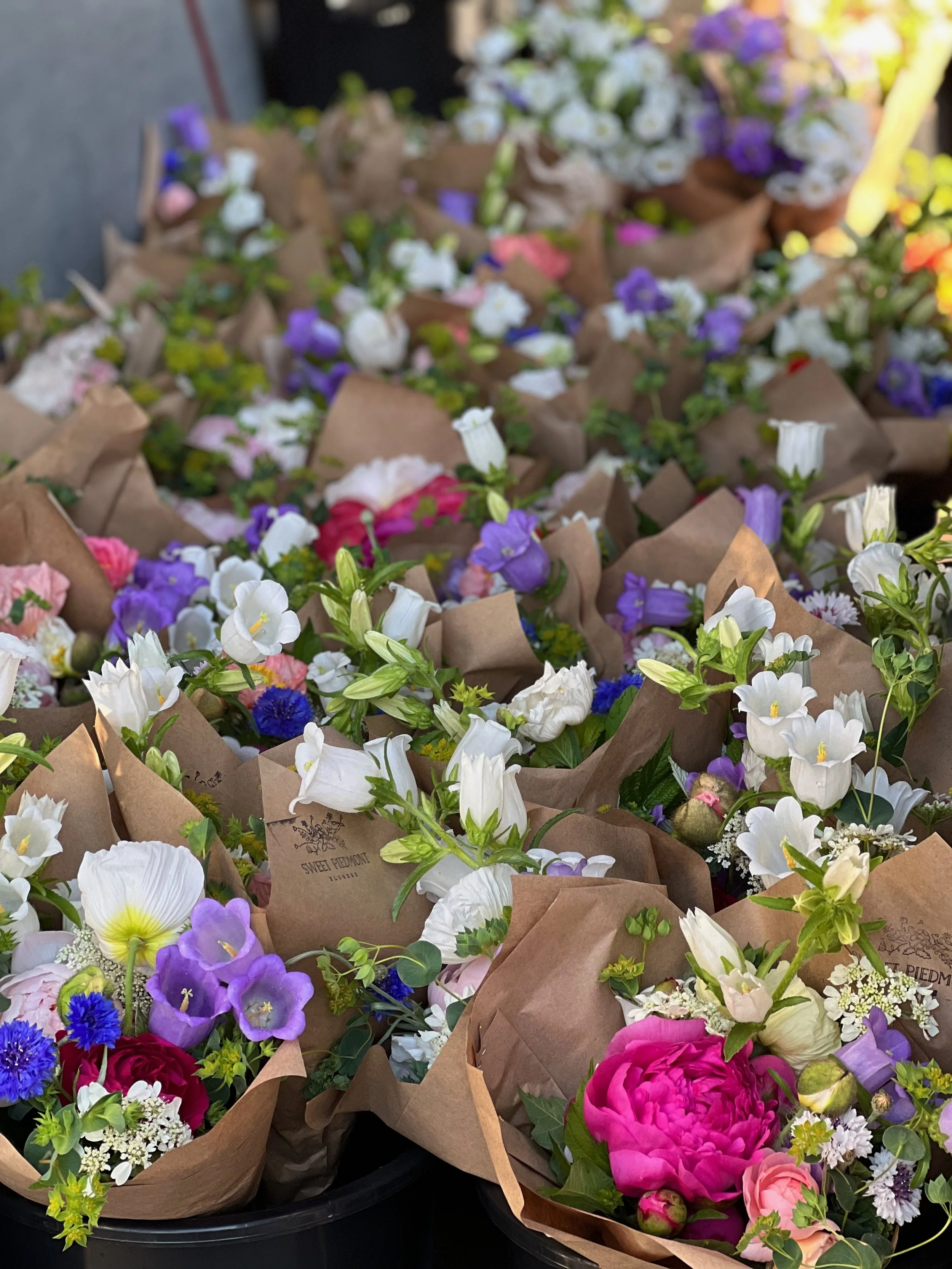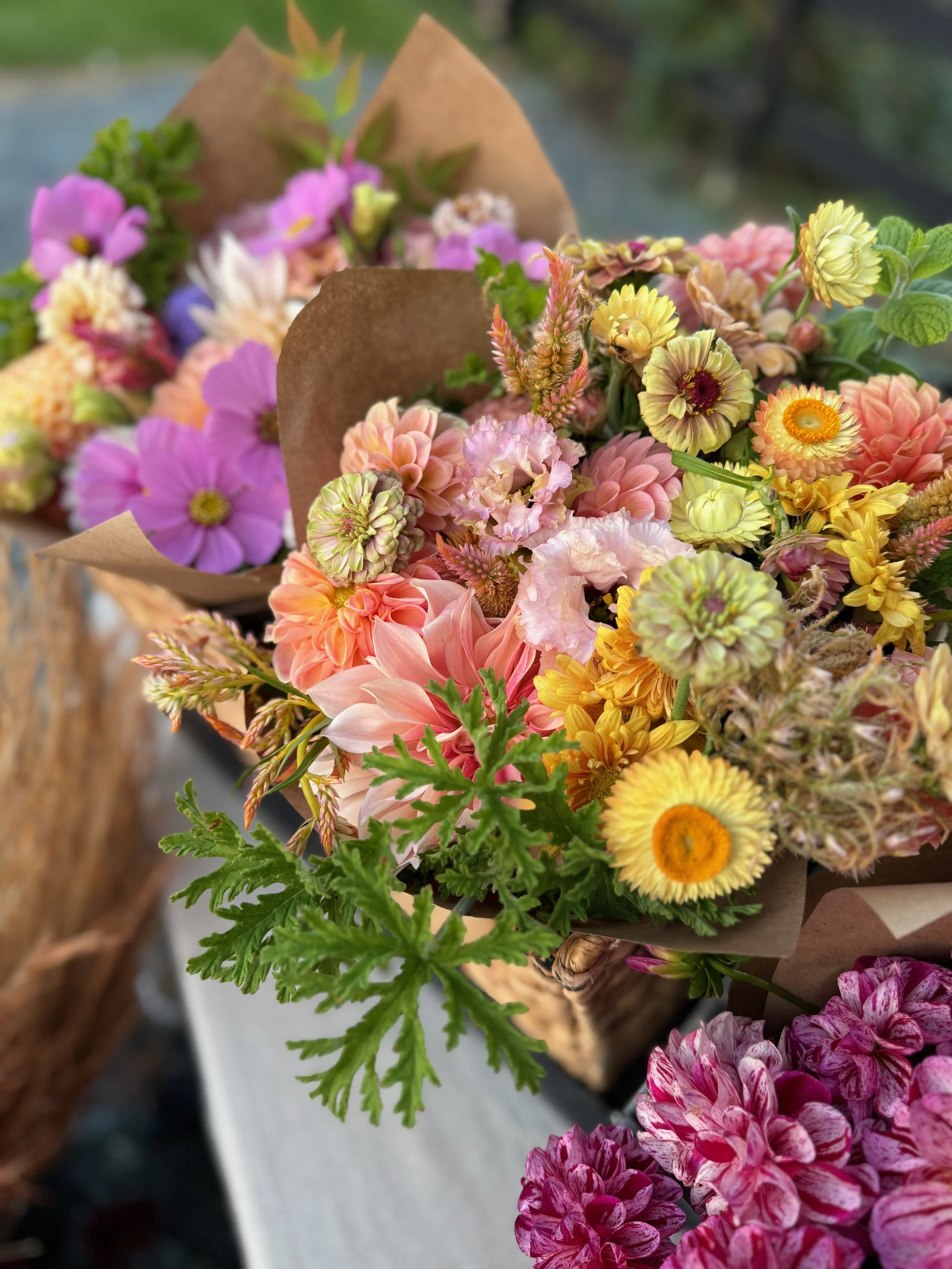The Metric That Matters Most: Tracking Unsold Stems to Build a Profitable Flower Farm
What if the most powerful metric on your flower farm isn’t what you sell—but what’s left behind?
It’s easy to focus on flashy numbers like revenue, total bouquets sold, or even how many flowers you can grow in a season. But the number that tells you the most about your farm’s efficiency—and profitability—is far simpler: unsold stems.
Whether they’re sitting in buckets after market or still standing in your field waiting to be deadheaded, unsold stems are a clear sign of where your time, money, and energy aren’t paying off. Tracking them, even loosely, can show you where you’re out of alignment with your market—and where you can make changes to work smarter, not harder.
Why Unsold Stems Matter
Every flower you grow represents an investment—seeds, plugs, compost, fertilizer—and all the labor that goes into watering, weeding, and staking. And if that flower makes it to harvest, you’ve added more time and energy in cutting, processing, and storing.
I learned this the hard way with white flowers. Because I was doing weddings, and white is a major wedding color, I planted lots of white—including lots of white perennials. After I stopped doing large weddings, I still had fields full of white limelight hydrangeas, snowball viburnum, and white dahlias—none of which sell well at our farmers market, where customers gravitate towards more colorful bouquets.
But those plants still have to be watered, weeded, and maintained. They also take up valuable growing space which, if we were space-constrained, would be a huge opportunity cost. They serve as a sobering reminder that what doesn’t sell still costs you just as much to grow.
Tracking unsold stems is also a simple, practical proxy for full cost accounting—which is the gold standard for cost-based pricing but is notoriously difficult to do well. Accurately calculating every input, from compost to electricity to labor, and then allocating those costs accurately across individual stems can be overwhelming, especially for small farms. While it doesn’t replace a full cost analysis, tracking unsold stems gives you clear, actionable insight into where your efforts and resources are going to waste—without drowning you in spreadsheets. (Stay tuned for a future blog all about pricing strategies!)
White flowers are gorgeous and are a perennial favorite with brides. But as we started to focus more on market and subscription bouquets, and less on weddings, I stopped planting almost any white annual varieties.
Size Doesn’t Matter; Efficiency Does
The unsold stems metric is size-agnostic. Whether you grow on a backyard plot or twenty acres, the percentage of flowers you don’t sell tells you more about your farm’s success than gross revenue ever will.
That's because a large farm might produce hundreds of thousands of stems but still leave a big portion unsold—wasting time and inputs. A small farm, on the other hand, might only grow a few thousand stems but sell nearly all of them, likely yielding a better profit margin. Unsold stems measure efficiency, not size. I would argue it’s the one metric that gives meaningful insight across every scale of flower farming.
Unusable vs. Unsold: Two Different Problems
It’s important to distinguish between blooms that are unusable and those that are unsold.
Unusable stems are ones you wouldn’t cut or sell—maybe they’re too short, bent, or bug-damaged. These reasons typically point to issues with growing: insect pressure, nutrient deficiencies, or improper spacing or plant selection.
Unsold but marketable stems are flowers that look great and were harvested—or could have been. This often indicates a mismatch between what you’re growing and what your customers want—or that your sales channel isn’t fully activated.
Both problems matter, but they require different solutions.
Our “Powder Room Posies”—small arrangements in miniature milk jars—started as a way to use up the super short stems that ranunculus and anemone plants generate in very early spring, which would otherwise be unusable as cut flowers. The Powder Room Posies soon became a farmers market favorite and now are part of our wedding and event offerings. We also use them to create our adorable mini “Bloom Bags.”
How to Track Unsold Stems (Without Overcomplicating It)
You don’t need a complicated system to start learning from your leftovers. Even the simplest observations—what came back from sales, what was harvested but never used, or what stayed in the field—can reveal valuable patterns about your growing and selling habits.
For most growers, unsold stems fall into four categories:
What Came Back — Flowers or bouquets that were taken to a sales outlet but not purchased.
What Never Left the Cooler — Harvested and processed blooms that were ready to sell but didn’t get used.
What Was Never Harvested — Marketable stems that stayed in the field because they weren’t needed.
What Didn’t Make it Past Quality Control — Stems that couldn’t be sold because they were defective (bug-eaten, too short, or bent, for example).
The key is to start noticing these patterns consistently—not just in your head, but somewhere you can review later when making planting or sales decisions.
You can make this as simple as jotting a note in a notebook or snapping a photo of leftover buckets at the end of the day. Or, you can use a dedicated tool like the Unsold Stem Tracker Freebie (below!), which gives you a ready-made place to log your weekly leftovers and make quick estimates. This way, you can capture the information without it becoming another overwhelming farm task.
The goal isn’t perfection—it’s creating usable data. Even rough estimates can help you see which crops or colors tend to be overproduced, and which ones you should expand next year.
Freebie: Unsold Stem Tracker
A quick, practical tool for flower farmers to track leftover stems so you can spot patterns, cut waste, and boost profitability.
Your (Unsold) Blooms Are Talking—Are You Listening?
Your leftovers aren’t just waste; they’re data. They’re often the loudest voice in the room, telling you what’s working—and what isn’t. These real-world examples from my own farm highlight how this simple metric—tracking what’s left behind—can reveal patterns, mistakes, and opportunities that might otherwise be missed.
This spring, I composted almost an entire procona of orange ranunculus. Why? Because I’d guessed wrong on color. Every stem of every other color ranunculus was used—and we would have liked to have even more pinks—but we just didn’t need that much orange in our mixed bouquets. Part of the reason I've put so much effort into creating signature color palettes is so I can better predict what colors—and how much of each—we’ll actually need. That will help solve the problem for next year.
In addition to the orange ranunculus overage (see caption, above) here are some other lessons I’ve learned from the stems that didn’t sell:
Overcompensating for prior shortages. After deer ate most of my celosia one year, I planted three times as much the next year. It turns out I’d planted plenty the first time—the problem was just that I hadn’t protected it!
Color misalignment. As discussed earlier, when I stopped doing weddings, my fields were still full of white flowers (limelight hydrangeas, snowball viburnum, white dahlias). But at markets, customers wanted color.
Borderline climate. Lupine is a perfect example of a plant that is only marginally suited to our Zone 7 (northern Virginia) climate. Some years, a cool spring gives me armloads. Other years, I barely get a handful of stems. Whether I should really be trying to grow flowers that are of questionable fit for my climate/environment is something I still wrestle with—it's hard to accept that prior bumper crops are an anomaly when it involves a flower I really love.
Overordering plugs. Plug minimums are often too big for small farms. I’ve ended up with a Scoop scabiosa surplus this year because it's an amazing Foundation Flower at a time of year when Foundations are hard to come by—but I don’t need 120 plants’ worth of a single color!
Your leftovers are asking the right questions: Did you plant the right mix for your sales channels? Did you grow the colors that actually sell? Are you growing crops that fit your climate—or are you fighting against nature?
Lisianthus (left photos) are top selling flowers for many cut flower farmers. But plug tray minimums mean you have to grow a lot of each color. “Scoop” scabiosa (right photos) are a fantastic addition to the cut flower line-up, but as they’re currently available only as plugs, color selection is key—especially if you’re making mixed bouquets—because you’ll have tons!
No One Wants to Dig Up Limelights
The best time to address unsold stems is before they ever happen. Once a crop is in the ground—especially perennials like the limelight hydrangeas I mentioned earlier—you’re essentially committed. Those plants are massive now, and digging them up would be a monumental task. I’ve learned to rationalize their presence by appreciating the windbreak they provide for our caterpillar tunnels, but I still wish I’d made better-informed choices about my ideal revenue channels before committing to an entire row of limelight hydrangeas—not to mention the row of snowball viburnum and all those white dahlias…
One of the biggest shifts in our own unsold stem levels came when we ramped up subscriptions. Farmers markets were on Saturdays, which meant we harvested on Thursday and Friday to prepare. By Monday or Tuesday, the fields were flush with flowers doomed for deadheading because it was too early to harvest for market. Introducing mid-week subscriptions solved that problem. We started doing big harvests twice a week and used far more stems, reducing waste dramatically.
Being able to sell a full van-load of flowers every Saturday at the farmers market was great—but it meant that we had an equally huge number of flowers ready for use mid-week. With no weekday farmers markets (at the time) to sell at, we started offering a bouquet subscription service to absorb the flow of flowers coming out of the field.
Feedback, Not Failure
Unsold stems aren’t failure—they’re feedback. When you track them, even loosely, you uncover valuable insights about what’s working, what’s not, and how to grow smarter. Whether you’re just starting out or have been farming for years, paying attention to this metric will help you create a more profitable, sustainable business.
And remember: you’ll never eliminate overages entirely. Crop failures are inevitable—every season brings at least one variety that doesn’t grow as expected or doesn’t perform like it did last year. To make sure you have enough, you’ll likely plant a little extra—especially of critical items you don’t want to risk being without—which sometimes means having too much if everything ends up growing and blooming as hoped. Part of the analysis is recognizing the difference between purposeful, expected overages (built-in as a buffer) and those that weren’t expected—which are the ones that reveal mismatches in crop planning or sales channels. The goal isn’t perfection; it’s to get smarter with every season, using your leftovers as lessons for better planning.
Choose Revenue Streams Wisely
If you pick the right revenue stream(s) for you—and grow the right flowers for that revenue stream—you’re far more likely to sell everything you grow. While it’s possible to shift your sales channels to match what’s already in the ground, you are far more likely to find success by refining what’s in your field to match the sales channel that’s right for you.
That’s where the Revenue Stream Compass™ Course can help—it’s designed to guide you toward the sales channel that fits your farm’s style, scale, and goals, so you can plan from the start to sell out. Want to align what you grow with where it sells best?



